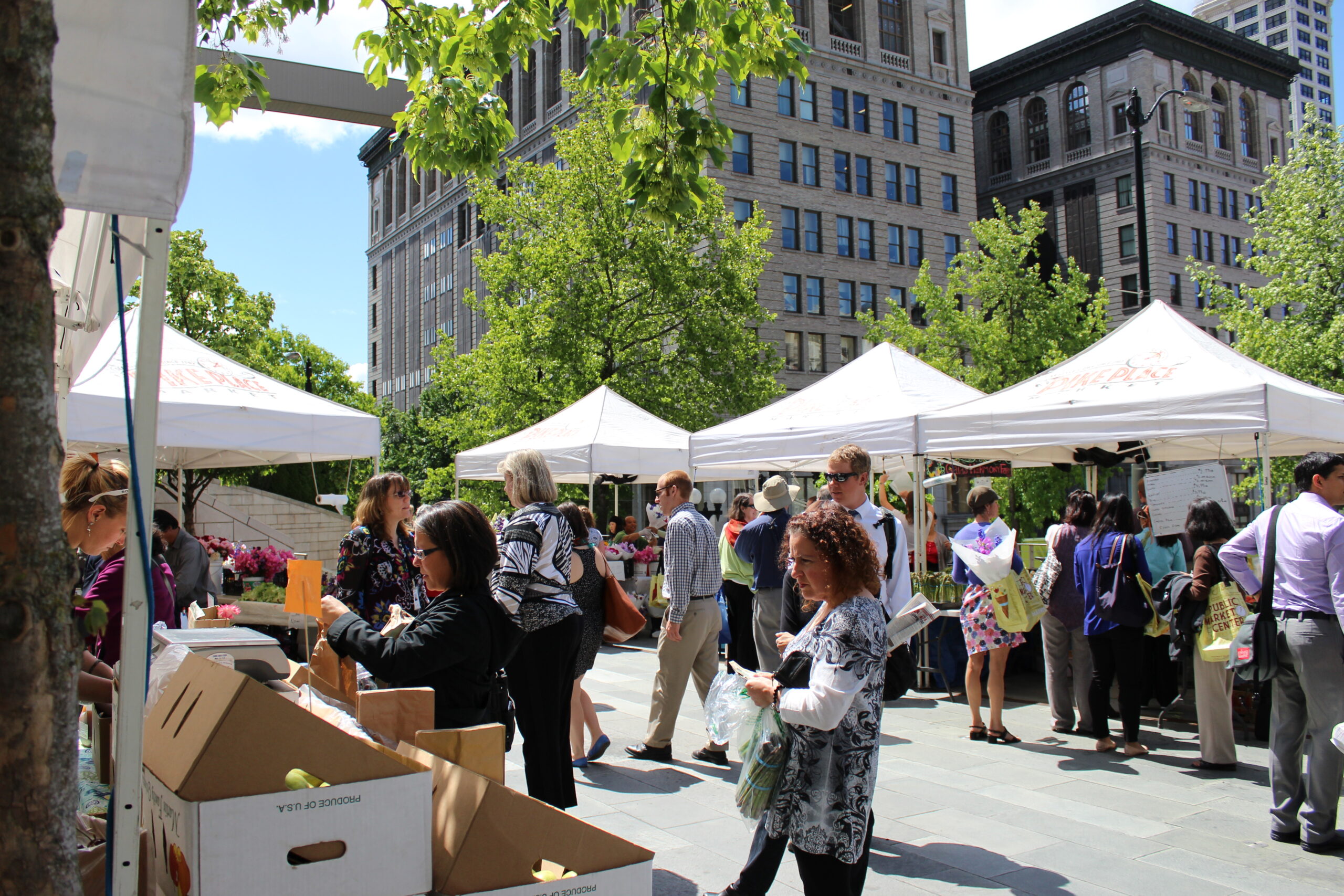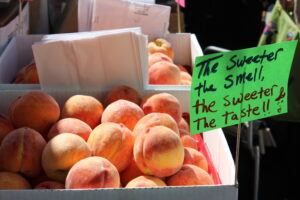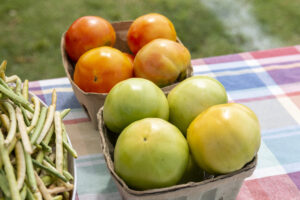News & Updates
The Case to Support Local Businesses and Farmers Markets


An invisible cost to modern agricultural practices exists today. Alongside the well documented challenges with industrial agriculture, pollution, disease, soil degradation, and more, there is the price of simply shipping produce from farms to grocery stores.
On average, a piece of produce in the United States travels 1,500 miles before being sold, amounting to 250,000 tons of greenhouse gas emissions from produce transportation annually. In total, agriculture accounts for 11% of the United States’ greenhouse gas emissions.

In addition to these emissions, the transportation of goods requires a significant amount of excess packaging that is often difficult to divert from landfills. In order to offset this environmental cost, it is imperative we work to shop locally.
Purchasing food from local family farms supports your community’s economy and greatly reduces the distance your food travels to get to you, thereby reducing its environmental impact. See if your community has a local farmers market and consider attending to minimize the cost of packaging and shipping food, while also supporting small scale farms that don’t utilize the same environmentally intensive methods that large-scale agriculture requires.
Vegetables such as corn or lettuce are planted in large monocultures— meaning one field is planted with a single plant, which impairs soil health and biodiversity. Planting in monocultures requires farmers to apply synthetic fertilizers and pesticides to keep the system going.
In 2018, farmers applied 8 million tons of nitrogen fertilizers to their crops in the United States. Without fertilizers, crops would not grow under these conditions. When it rains, the excess fertilizer is not absorbed by the crops, and runs off into streams, rivers, and lakes causing algal blooms, like red tides, that choke our waterways.
Buying organic is a step in the right direction. Food grown organically is unequivocally less harmful for the environment than conventionally grown products. Yet, much of the organic-labeled food found in grocery stores today is still produced with similar methodology as conventional, such as in monocultures or in factory farming setups.
Different conditions exist in every community when it comes to availability and access to locally grown and organic foods. They can be expensive, sometimes prohibitively so. Learn about different options in your community so you can make the best choices possible under the conditions you are presented with. 
When shopping for groceries, consider looking at all aspects of the food production process, from the farm itself to how it’s getting to the store. Buying local goods translates to a lower carbon footprint for any individual item by reducing the amount of packaging needed throughout the product’s life cycle. Shipping has continued to become a larger and larger share of global greenhouse gas emissions over the last decade, and this is in no small part due to the increase in home delivery and two-day shipping.
Even just buying a product from a store rather than having it delivered reduces your impact on the environment, as products that are shipped together rather than individually have less packaging and produce less waste. Keeping our dollars local is the best way to ensure that your spending has a lower environmental impact while we bolster our local economies.
Let’s protect and enjoy our natural world together
Get the latest in Leave No Trace eNews in your inbox so you can stay informed and involved.
